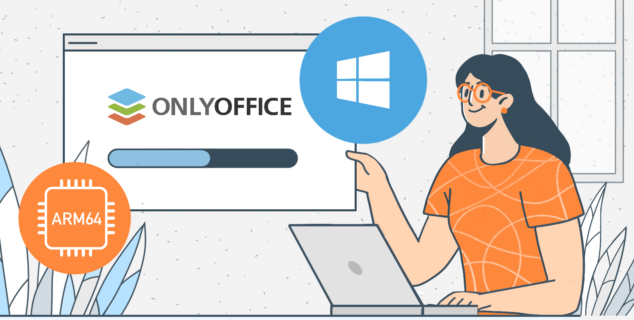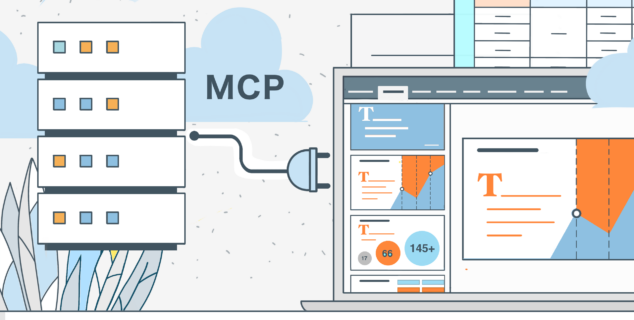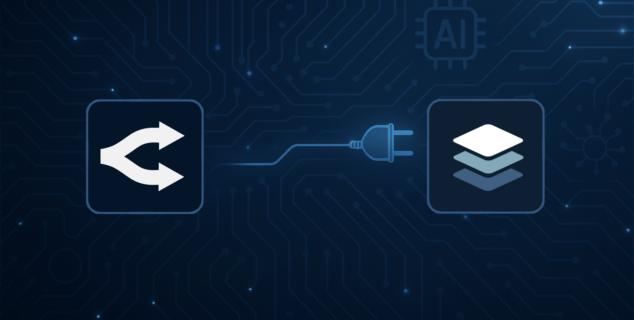7 enterprise software trends to look out for in 2025
Like any other IT sector, the enterprise software market is currently undergoing a transformation caused by significant changes in the global economy and the way businesses operate. The rise of artificial intelligence, the use of microservices, the emergence of new technologies, the wide application of data collection and analysis capabilities, and other important factors influence enterprise software developers making them quickly adapt to the rapidly changing reality. Read this article to find out the main enterprise software trends in 2025.

What is enterprise software and what benefits does it offer?
The category of enterprise software, sometimes referred to as enterprise application software (EAS), includes computer programs designed to help businesses and companies manage their specific activities. The key difference from other types of programs is that enterprise software is oriented to meet the various needs of enterprise customers rather than individual users.
Such software can find its application in different scenarios, for example, making it easier to create custom web applications, analyze data, handle payments, monitor projects and tasks, control sales processes, keep track of and plan marketing activities and manage human resources.
Enterprise software comes in a lot of different varieties. These include industry-specific programs and universal software that entrepreneurs and enterprises can utilize regardless of the nature of their business.
These are some common reasons why using enterprise software is a good idea for your business:
- More efficient management and distribution of available resources. Enterprise software helps businesses grow and allocate their limited resources to the right departments and directions. They can adjust their size and scale according to their constantly changing needs to reduce expenses, allocate resources sensibly and adhere to budgetary constraints.
- Higher organizational efficiency. By helping businesses to automate a wide range of processes like payroll, marketing, HR and data processing, enterprise application software allows staff members to concentrate on more important tasks that could generate additional profit and add value to the company.
- Better competitiveness. The use of up-to-date enterprise software boosts the company’s competitiveness by enabling it to react to shifting market situations quickly and always stay ahead of its competitors.
- Enhanced security. Enterprise software enhances the security of the company’s computer system by preventing cyberattacks and data leaks due to a set of specialized tools and technologies, such as two-layer authentication and password-protected access to confidential information and data.
- Increased productivity. Artificial intelligence, data analytics programs, machine learning and project management apps are just some of the most popular examples of technologies and tools that facilitate team communication and improve collaboration, which results in better performance of each team member.

7 enterprise software trends in 2025
Since the enterprise software market is changing quickly owing to technological improvements and breakthroughs, company owners need to be aware of the newest business trends. Some of them prefer to switch to cloud computing and cloud-based solutions to improve scalability, flexibility and cost-efficiency while others are looking for reliable remote work models and collaborative software solutions.
Below you will find some of the most important enterprise software trends that are highly likely to shape the enterprise software market and influence the decisions made by company owners and CEOs. Let’s go over each one individually and see how they have already taken shape in the existing enterprise software based on the example of ONLYOFFICE DocSpace, an open-source collaborative platform based on the concept of rooms and designed to allow entrepreneurs, businesses and companies of all sizes to organize seamless document collaboration and file-sharing with their clients, partners and third-parties.
1. Open-source business model
In recent years, open-source technology has quickly acquired popularity and acceptance in the business community. Many companies and organizations are using open-source software and technology solutions to meet their demands as they look to reduce costs and boost flexibility, avoiding vendor lock-in.
Not only individual users and enthusiasts but also businesses of different types can benefit from open source, as it offers reliable and efficient solutions for collaboration and teamwork. In most cases, they can implement those solutions at no cost or at a relatively low cost in comparison with proprietary software. Additionally, open-source software is very easy to modify and adapt to industry-specific needs, so enterprises, for example, engineering firms, can add new features and improve open-source technologies to make them truly functional in the corresponding fields.
It’s often believed that open source isn’t a viable business model. However, this is not true. Some open-source software developers often offer a free community version of their product and commercial editions that tend to provide access to the same functionality plus scalability features, professional tech support and training. This hybrid model allows developers to stick to the main ideas of open-source technology and distribute their product for free, generating some income for further development.
Real-life example: ONLYOFFICE DocSpace is a truly open-source enterprise-level software the source code of which is available on GitHub. Anyone can check its repositories and has the freedom to access, use, distribute and modify the source code for free unless they violate the terms and conditions of GNU Affero General Public License v3.0.
At the same time, ONLYOFFICE DocSpace offers commercial versions to enterprise customers who would like to have access to additional security and branding features, regular updates and professional tech support.
2. Cloud-based solutions for better flexibility
Another industry trend that has been in the public eye over the last few years is the constantly growing popularity and wide application of cloud computing. Platform as a Service (PaaS), Software as a Service (SaaS) and Infrastructure as a Service (IaaS) are becoming more and more popular with enterprise customers, and this will develop swiftly in the future to meet the ever-changing needs and expectations of businesses from various sectors.
Many factors make cloud computing a popular choice in the enterprise software market, but the most important ones include lower costs and enhanced productivity, which results in better performance and even increased security.
Real-life example: Apart from its self-hosted edition for local deployment, ONLYOFFICE DocSpace provides enterprise users with the ability to manage office files and co-edit them in real time in the cloud. The SaaS version is hosted on GDPR-compliant servers based in Europe and the USA and comes as an “out-of-the-box” solution that doesn’t require updating and configuring.
3. Artificial intelligence integration
One of the most exciting new developments in enterprise software is generative AI, which is completely changing the way companies approach innovation and problem-solving. The capacity of AI to produce new ideas and content as well as the ability to deal with repetitive administrative tasks lead to better productivity and reduce costs to a considerable degree.
By producing responses that resemble those of a real human being, AI-powered technology is also used to automate and improve client interactions. It gives advertisers and marketers the ability to create engaging content at scale, including social media and email campaigns.
Another advantage of artificial intelligence is that it can help companies automate data entry, data processing and identity verification.
Real-life example: ONLYOFFICE DocSpace comes with its own collaborative office suite, ONLYOFFICE Docs, that allows users to create, edit and co-author documents, spreadsheets, presentations, forms and PDF files using an AI assistant. Unlike other popular enterprise software tools, the ONLYOFFICE AI assistant is compatible with all popular AI models and providers making it possible to connect several AI helpers for various tasks, such as translation, text generation, word analysis and summarization.
Some of the possible integration examples include OpenAI’s ChatGPT, DeepSeek, Mistral, Groq AI, Together AI and more. When integrated, artificial intelligence allows you to polish your texts and rewrite them in different manners, correct mistakes and typos, find information and send direct requests to the chatbot.
Also, there is another AI plugin for the ONLYOFFICE editors, ZhiPu Copilot, which allows DocSpace users to generate texts and deal with other tasks using the power of ZhiPu AI, an AI technology from China.
4. Focus on a better user experience
Enterprise software interfaces that are focused on the needs of users have become critical components for companies looking to match software to user expectations. Improving customer engagement ratio and productivity in software can be achieved by designing an intuitive and captivating user experience. By concentrating on what your enterprise users truly desire from a computer program, it’s possible to enhance their experience and satisfaction.
Real-life example: ONLYOFFICE DocSpace’s user interface looks modern and intuitive so newcomers will find it easy to get started with the platform. All main sections are located on the left with additional windows appearing on the right. The DocSpace interface is not overloaded with excessive elements making it easier to navigate between the required features.
Additionally, ONLYOFFICE DocSpace provides customization tools allowing you to experiment with various color schemes and activate Dark Theme for a better user experience in inadequately lighted environments.

5. Enhanced security features
The rise of cloud-based platforms and wide application of SaaS services in the enterprise software market inevitably lead to privacy and data security concerns. While going digital and migrating to the cloud, companies would like to rely on strong security measures due to the surge in cyberattacks worldwide.
To protect user data, businesses can carry out frequent security audits and use a variety of data authentication and encryption tools to reduce the risk of data breaches and keep sensitive data away from unauthorized access.
Real-life example: Built with a focus on security, ONLYOFFICE DocSpace complies with the main data privacy standards, such as GDPR and HIPAA, and provides all the required features to protect sensitive information, such as the AES-256 encryption algorithm, the HTTPS protocol, JWT, activity tracking and audit reporting tools.
Additionally, the DocSpace platform allows you to create virtual data rooms (VDR). These are dedicated spaces for storing, managing, and sharing confidential business information. A VDR room is a digital workspace where authorized DocSpace users can collaborate on sensitive documents while maintaining strict security. VDR rooms are equipped with advanced security tools, such as watermarks, configurable file lifetime settings, and copy and download restrictions, which protect important documents from unauthorized access and use.
6. Integration with third-party tools and services
In their daily operations, most companies have to use multiple software solutions from various providers because it’s impossible to find a single enterprise application that could cover a whole range of business needs. That’s why facilitating the sharing of data and workflows between diverse systems is essential for enterprise customers, and the answer to this challenge might be the integration of enterprise software with third-party services and tools, which can add new features.
Real-life example: ONLYOFFICE DocSpace provides powerful integration capabilities allowing you to integrate it into various business platforms, LMS solutions and content management systems, such as Drupal, WordPress, Moodle and Pipedrive. There is also an integration app for Zoom designed to make it possible to create, edit and collaborate on documents in real time during Zoom video calls.
The ONLYOFFICE DocSpace and Zapier integration deserves special attention. With Zapier, you can automate workflows by connecting ONLYOFFICE DocSpace with hundreds of business apps, like Slack, Asana, Trello, HubSpot, Gmail, Discord, Zoom and more.
Additionally, ONLYOFFICE DocSpace can be integrated into a Single Page Application or Docspace rooms can be embedded into your website making it easier to share files with external users.
7. Decentralized IT management
There is a shift with business units increasingly taking control of their own IT resources. This trend allows for more fluency and response time to specific departmental needs. With this model, teams and departments can choose software tools that suit their workflows and can be flexibly adapted to constantly changing circumstances.
Real-life example: The self-hosted version of ONLYOFFICE DocSpace lets you create multiple DocSpaces for all your teams and departments making them accessible to all users. Each space can be managed and configured depending on its purposes with unique branding. Thus, each team can have their own dedicated space they can use for internal collaboration and interaction with other departments and third-party users.

Get ONLYOFFICE DocSpace for your team
Do you want to enable real-time document collaboration for the members of your company so that they can freely edit and co-author office files with teammates, partners, customers and other people? Try ONLYOFFICE DocSpace in the cloud or deploy its self-hosted version on your Linux or Windows server for more data privacy and control:
TRY IN THE CLOUD TRY ON-PREMISES
Summary
In order to be competitive, businesses need to stay up to date with the latest industry trends, including artificial intelligence (AI), cloud computing and advanced security practices, which foster innovation and optimize business operations. The best strategy might be the use of enterprise software that corresponds to all the market trends and makes a difference in the day-to-day operation of your company.
Create your free ONLYOFFICE account
View, edit and collaborate on docs, sheets, slides, forms, and PDF files online.


